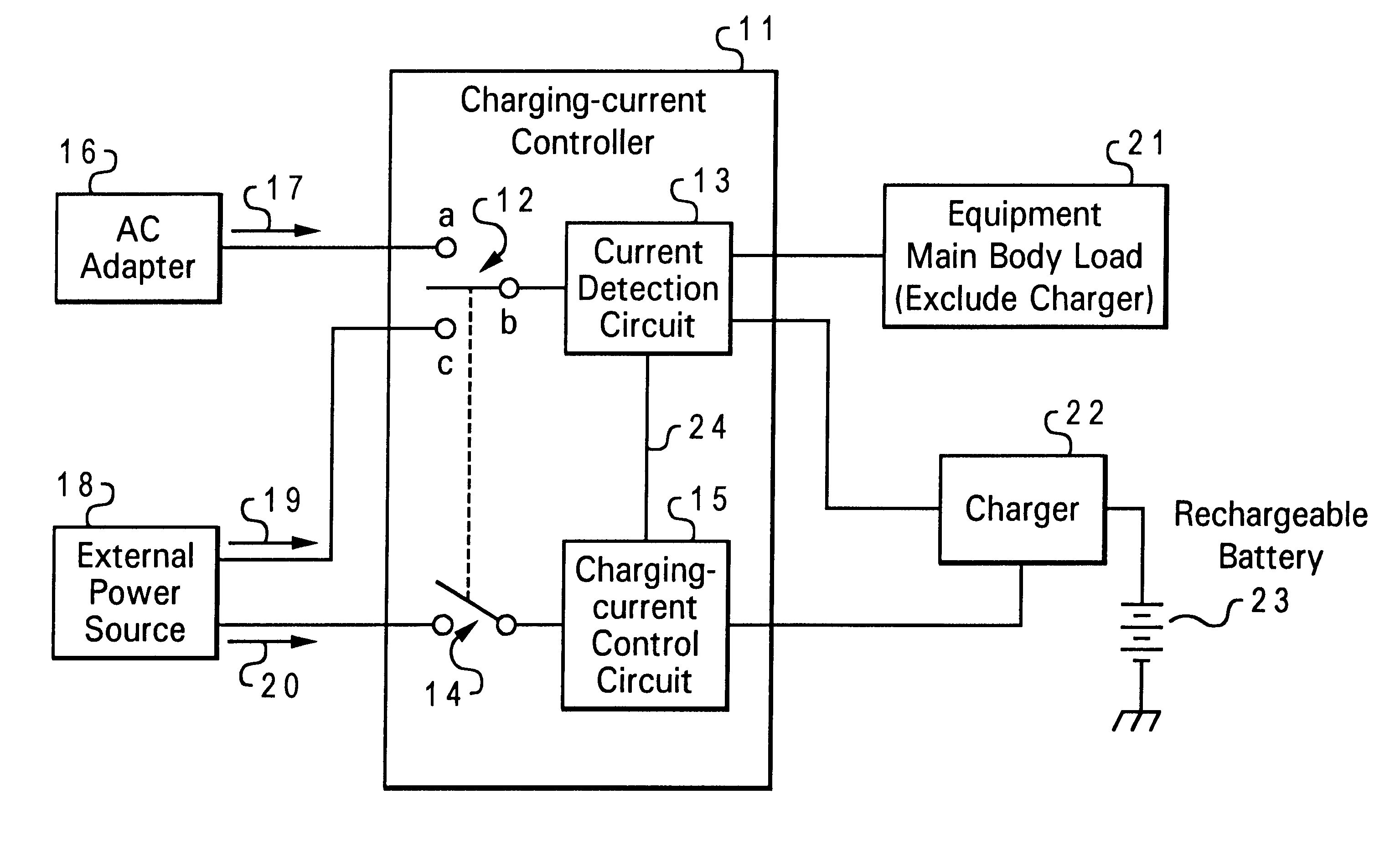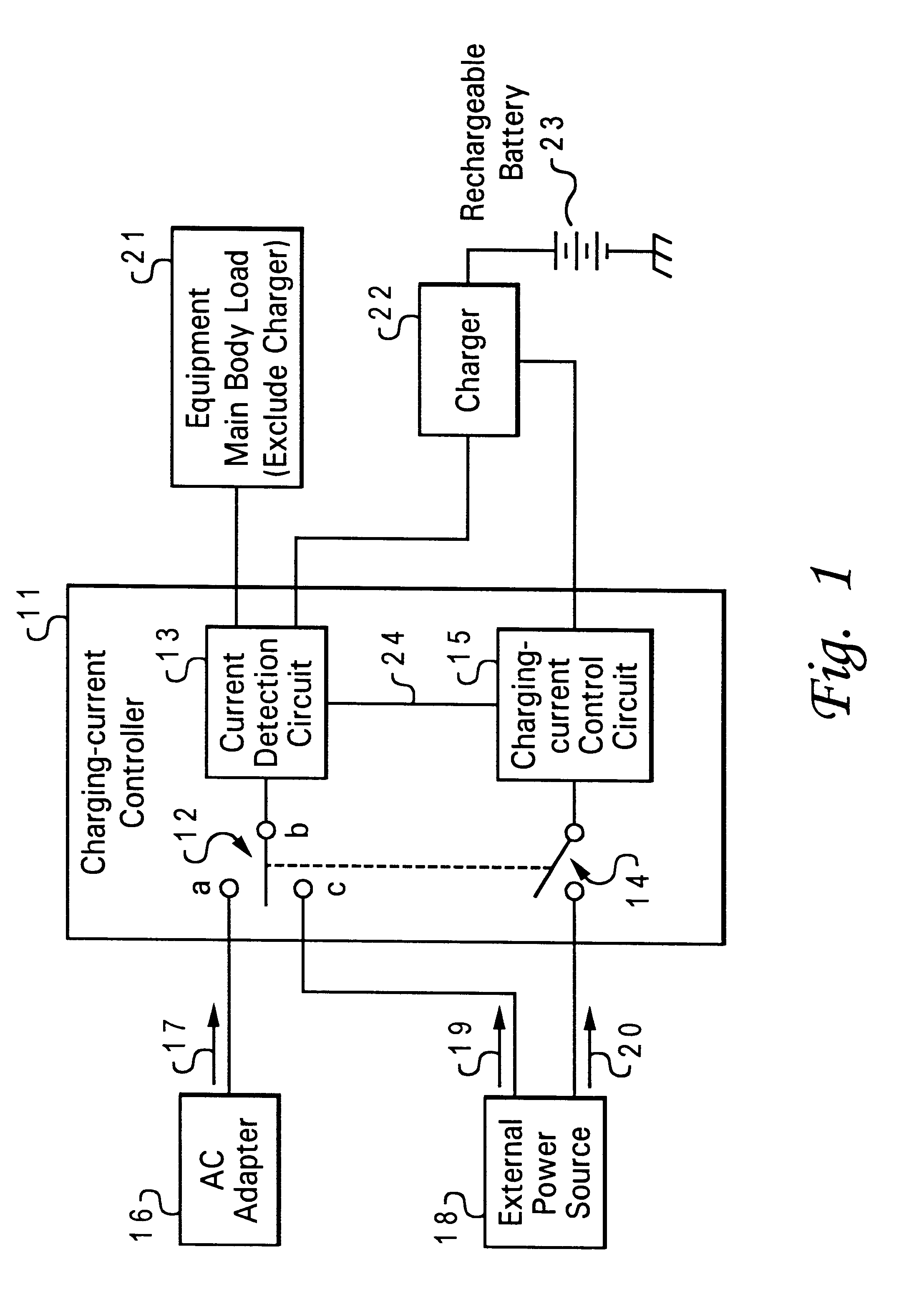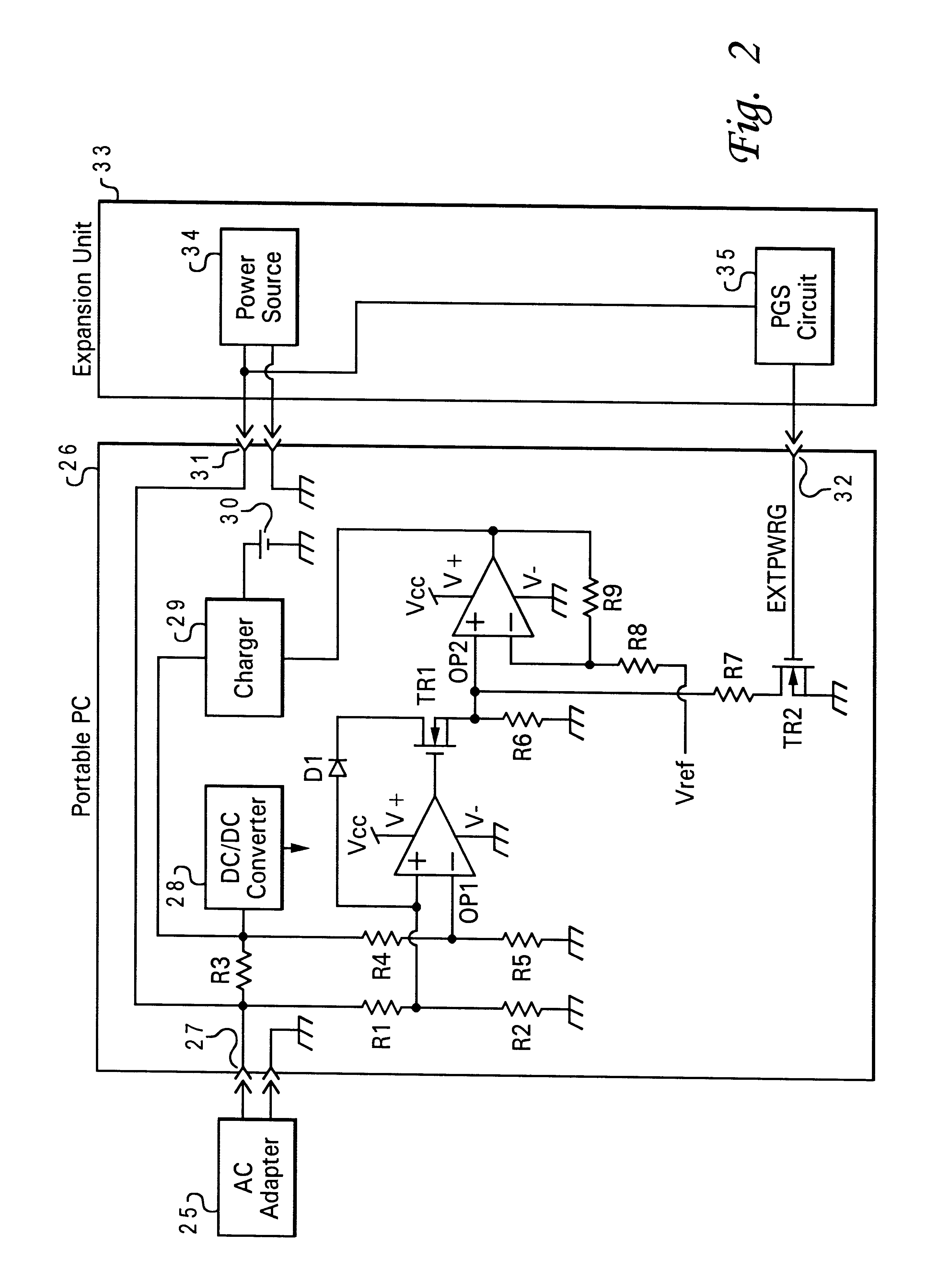Method and apparatus for controlling battery charging current
a charging current and battery technology, applied in the field of battery chargers, can solve the problems of limiting the dc power output of the ac adapter, and the inability to use a larger power to charge the rechargeable battery,
- Summary
- Abstract
- Description
- Claims
- Application Information
AI Technical Summary
Problems solved by technology
Method used
Image
Examples
first embodiment
With reference now to the figures, and in particular to FIG. 1, a block diagram depicting a portable PC having a charging-current controller in accordance with a first embodiment of the present invention. A charging-current controller 11 according to the first embodiment comprises power path control switch 12, a current detection circuit 13, signal connection means 14, and a charging-current control circuit 15.
One end of the power path control switch 12 is connected to the current detection circuit 13, while the other end is selectively connected to either an AC adapter 16 or an external power source 18 that is incorporated in an expansion unit. The power path control switch 12 has three states a, b, and c. In the state a, the power path control switch means 12 selects the AC adapter 16. In the state c, the power path control switch 12 selects the external power source 18 incorporated in an expansion unit. In the state b, the power path control switch 12 selects neither the AC adapt...
second embodiment
Referring now to FIG. 3, a second embodiment of the present invention is depicted. A charging-current controller 41 according to the second embodiment comprises a power path control switch 12, a current detection circuit 13, a signal connection 14, and a charging-current control circuit 42. Since the power path control switch 12, the current detection circuit 13, and the signal connection 14 are the same as those of the first embodiment shown in FIG. 1, their function is as described above.
The function of the charging-current control circuit 42 is to control direct current (charging current), which flows in a charger 22, to an optimal value in accordance with a direct current value detected by the current detection circuit 13. This function is the same as the charging-current control circuit 15 of the first embodiment shown in FIG. 1. The difference between the charging-current control circuit 42 of the second embodiment and the charging-current control circuit 15 of the first embod...
PUM
 Login to View More
Login to View More Abstract
Description
Claims
Application Information
 Login to View More
Login to View More - R&D
- Intellectual Property
- Life Sciences
- Materials
- Tech Scout
- Unparalleled Data Quality
- Higher Quality Content
- 60% Fewer Hallucinations
Browse by: Latest US Patents, China's latest patents, Technical Efficacy Thesaurus, Application Domain, Technology Topic, Popular Technical Reports.
© 2025 PatSnap. All rights reserved.Legal|Privacy policy|Modern Slavery Act Transparency Statement|Sitemap|About US| Contact US: help@patsnap.com



